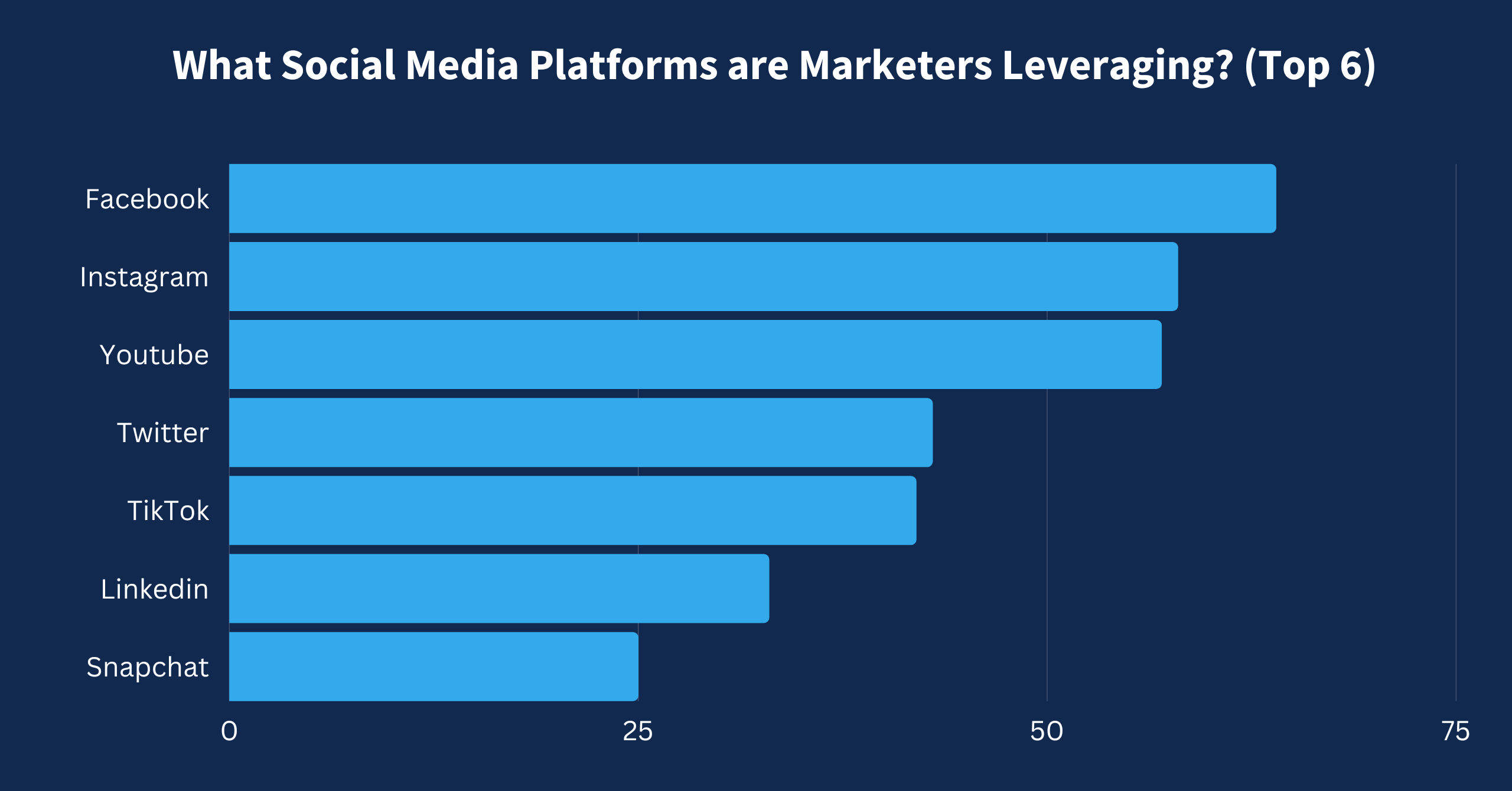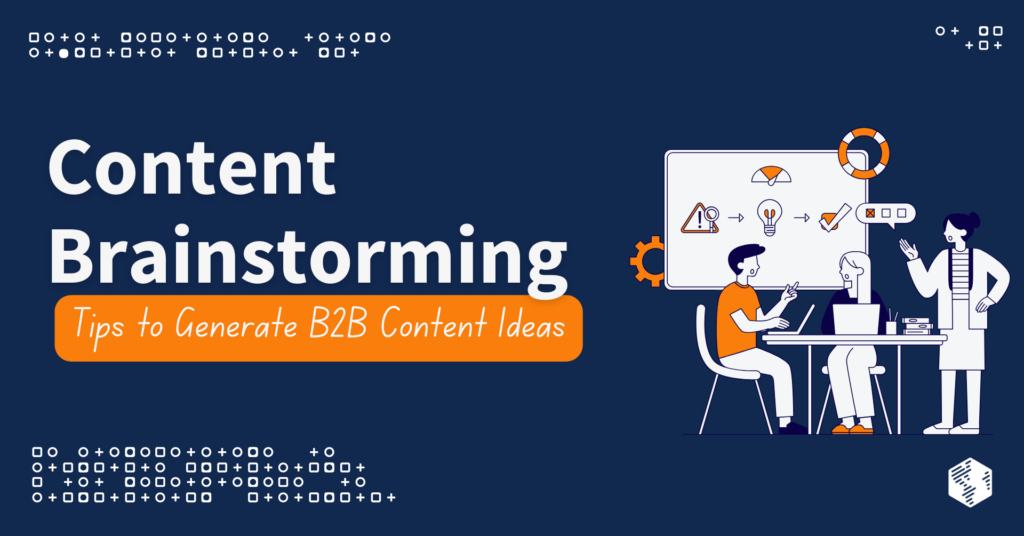A wise person once said: “Content is king, but distribution is queen.”
Picture this: you publish a fantastic blog post that addresses your target audience’s pain points and has the power to pull high-quality leads like a magnet. However, the expected traffic doesn’t come, and your efforts go to waste.
Sounds familiar?
We’ve all been there. It’s the most frustrating experience for a marketer, but look: you can’t expect traffic and leads if you don’t distribute your content.
Not distributing your content is like yelling into an empty room. It doesn’t make sense because no one can see it. Your target audience doesn’t know it exists.
A well-thought-out content distribution strategy can help place your content in front of the right people. It can ensure your efforts yield positive results.
How do you develop an effective content distribution strategy? Read on to find out.
What Is Content Distribution?
B2B content distribution includes leveraging various channels to publish, share, and promote your content. It helps capture your target audience’s attention and drive more traffic to your site.
You know that content marketing drives sales, but proper content marketing distribution can supercharge your efforts.
It requires a detailed plan for publishing and promoting your content before creating it because that’s how you can fine-tune it for each channel. That’s how you make it convert.
Content distribution helps generate leads, but it’s also vital for B2B demand generation, helping you build brand awareness on your target audience’s preferred channels. It’s the lifeblood of your digital marketing.
Here’s how to distribute content marketing to boost leads, conversions, sales, and ROI.
Steps to Develop an Effective Content Distribution Strategy
Content distribution requires more than hitting the “Publish” button, sharing the piece on social platforms, and including the link in your email newsletter.
Do you even know what platforms your target buyers prefer? What content do they expect from brands in your industry or niche? How often do they want new pieces?
Do you know which distribution channels help drive new audiences?
Answering these questions will help you craft a winning strategy that gets your content the attention it deserves.
Here’s how to develop an effective content distribution strategy to boost content discovery, brand awareness, traffic, engagement, sales, and ROI.
Conduct Audience Research
Researching your target audience will help you learn what content to create and which distribution channels to use. You’ll better understand their pain points, preferences, and opinions on your current efforts. You’ll know what media types they resonate with and how to grab their attention.
You can ask your customers, social media followers, and email subscribers for feedback through surveys, polls, and direct questions. Listening to them is the best way to understand them.
You can also use HubSpot Marketing Hub and Google Analytics. Both are excellent tools for gathering insightful demographic data, creating your ideal buyer persona, and making data-driven decisions for better content publishing and promotion.
Define Your Content Distribution Goals and KPIs
What do you want to accomplish with your content? Do you wish to build brand awareness, increase website traffic, or boost sales?
All of the above?
Content distribution goals will guide you, helping you reach the desired results with every content piece across channels.
The key is to set SMART (Specific, Measurable, Attainable, Relevant, and Time-Bound) goals because they’ll give you a sense of direction.
Here’s an example:
- Specific: drive organic traffic to your blog through high-quality backlinks.
- Measurable: get 30 new backlinks from authoritative websites.
- Attainable: getting 30 new backlinks is achievable since you already receive 20 monthly without a content distribution strategy.
- Relevant: the goal aligns with your long-term objectives and organic content marketing goals.
- Time-bound: achieve this goal within the next two months.
How can you balance multiple content distribution goals? By establishing a primary one and ensuring others contribute to it.
For instance, your primary goal can be increasing revenue, while driving traffic and building brand awareness can be your secondary goals.
How can you know where you stand regarding achieving those goals?
Set B2B marketing KPIs (key performance indicators) for content distribution. They’ll help you measure and improve your strategy’s effectiveness.
Content distribution KPIs are different for every channel and content type.
For instance, unique page views and traffic sources can help you measure website traffic and reach. Average time on site and bounce rate reveal engagement, while click-through rates, conversions, and backlinks showcase your email and ad campaigns’ impact.
Backlinks, average time on page, exit rate, comments, and shares are some of the best metrics to measure your blog’s performance regarding brand awareness, engagement, lead generation, and conversion.
Select Relevant Content Distribution Channels
Your audience research will help you know which content marketing distribution channels your target buyers frequently use. However, even if most prefer social media, don’t neglect your website and email.
According to HubSpot, 42% of marketers leverage social media for content distribution, 33% prioritize their website or blog, and 32% use email marketing.
Leveraging your target customers’ preferred channels and optimizing those you own will help attract the right buyers. However, don’t forget about other platforms that could extend your reach.
Which distribution channels help drive new audiences?
Here are some examples:
- Podcast distribution platforms
- Social media groups
- Online forums
- Press release websites
- High-authority blogs
- Social media ads
- Influencer marketing channels
- Q&A platforms
Before choosing any channel, ensure it aligns with your goals and target audience’s preferences and behavior. Start small to test them and determine which produces the best results.
Determine the Best Content Types to Create and Distribute
Blog posts typically first pop to mind when thinking about content marketing. After all, blogs have been the primary marketing channels for decades.
However, focusing only on blog posts may not help you stand out.
According to EarthWeb, bloggers worldwide publish over 7.5 million blog posts daily.
Diversifying your content distribution strategy is the best way to go.
Researching your audience will help you learn what content they appreciate. While focusing on their preferred types is a no-brainer, you should provide multiple content assets to capture more leads and conversions.
According to HubSpot, 50% of marketers leverage videos, 47% create images, and 33% publish blog posts. Others primarily use infographics (30%), podcasts (28%), and case studies (28%), which are all high-converting media formats.
Other content types for your distribution strategy can include:
- Ebooks
- White papers
- Webinars
- Success stories
- Industry reports
- Checklists
Remember that some content types work better on specific platforms.
For instance, articles and guides work well on LinkedIn, YouTube is ideal for videos, and Instagram is perfect for short videos, eye-catching images, and checklists. Facebook is excellent for all of those.
Ebooks, webinars, white papers, infographics, case studies, and success stories should have dedicated landing pages on your website.
This step is straightforward. You already know what to create – grab the proverbial pen and paper and start crafting it.
Make it relevant, helpful, informative, insightful, and engaging. Enrich textual content with visuals to capture your audience’s attention, address their pain points to drive engagement and conversions, and make every piece shareable to reach a broad audience.
Most importantly, tell a story. Storytelling is the key to effective content that converts.
Create an Editorial Calendar
Creating an editorial calendar will help you put your B2B content marketing distribution plan to use.
Think of it as a roadmap guiding all your content creators and editors toward your content distribution goals. It will help them stay on the same page regarding publishing, sharing, and promoting every piece.
The best editorial calendar tools to plan and schedule content distribution are HubSpot, Google Calendar, Microsoft Excel, Google Sheets, Asana, CoSchedule, and Trello.
Your calendar should contain content formats, titles, keywords, distribution channels, publication dates, authors, and potential repurposing plans. Publishing frequency is also vital, helping you maintain consistency, which your target audience will appreciate.
According to HubSpot, 34% of marketers publish content multiple times per week, while 33% do it every day.
Daily publishing and promotion might be overkill; you wouldn’t want to overwhelm or spam your audience. Several times a week is a standard practice among the most successful brands.
You don’t have to distribute new content each time; you can reshare and repurpose existing pieces.
Distribute Your Content Across Channels
Now that you have a content distribution plan, it’s time to share your content with the world.
Publish it on relevant platforms, share it in your email newsletter, spread the word on social media, and promote it regularly.
Follow your editorial calendar, optimize every piece for suitable channels, and craft an engaging copy to compel your audience to watch, listen to, or read your content.
Track Your KPIs and Analyze the Performance
You can’t know how your content distribution strategy is panning out if you don’t measure its performance. You’ve already set your goals and KPIs; it’s time to see what the numbers say.
B2B marketing analytics tools like Google Analytics, HubSpot Marketing Hub, Chartbeat, Marketo Engage, BuzzSumo, and Semrush are your best options for tracking and analyzing your strategy’s effectiveness.
Their user-friendly dashboards and insightful reports will make measuring the metrics and improving your strategy a breeze.
How to Refine Your Existing Content Distribution Strategy
You now know how to develop an effective content distribution strategy, but what about enhancing an existing one?
There’s always room for improvement, so developing a strategy shouldn’t be a one-time event. It should be an ongoing process.
What works today may be ineffective tomorrow.
How can you refine your content distribution strategy? You can use these four essential tactics.
Audit Your Content
A B2B content audit will provide insights into the performance of your published pieces. You’ll assess if they align with your goals, optimize them for search engines and channels, update relevant information, and improve the overall quality.
Use Google Analytics, Yoast SEO, MySiteAuditor, Screaming Frog, Semrush, BuzzSumo, or Ahrefs’ Content Gap tool to gain insights.
Evaluate Existing and Test New Distribution Channels
Analyze your current approach to see what channels are the most effective and which may not be working. Experiment with new platforms to see if they’ll have a more significant impact.
Repurpose Content for Different Channels
Content repurposing is excellent for driving more traffic, conversions, and sales with minimal effort.
Turning your underperforming pieces into new formats and refreshing them with new insights will work wonders for your strategy. The same goes for top-performing content; repurpose it to reinforce your message.
Leverage Partner Marketing
Collaborating with brands that offer similar products or services and aren’t your direct competitors can shoot your content’s visibility through the roof.
You’ll distribute their content on your channels, they’ll do the same for you, and everyone will benefit from more exposure. It’s a match made in marketing heaven.
Refining your existing content distribution strategy comes down to ongoing tracking and analysis to see what works and what doesn’t. Keep everything fresh and relevant to your target audience’s needs for the best results.
Content Distribution Platforms
You can use free and paid content distribution channels to spread the word about your business and attract more buyers.
Free Channels
Free content marketing distribution channels include owned and earned media.
Your owned channels include your website, blog, email newsletter, podcast distribution platforms, and social media profiles.
Each is vital, but social media distribution is the best for sharing most of your content. It helps extend your reach and attract and engage more potential buyers.
According to HubSpot, Facebook dominates as the best social media distribution channel, with 64% of marketers leveraging it. Instagram (58%) takes second place, and YouTube (57%) follows slightly behind.
Your earned or shared channels include third parties promoting your content for free. For instance, they may publish your guest blog posts and PR articles and mention you on social media, online forums, and review websites.
Paid Channels
Paid content distribution channels include paid ads (PPC, social, and display), sponsored content, and influencer profiles.
PPC ads are excellent for lead generation and conversion, while social and display ads also help increase brand awareness.
Paid B2B influencer marketing and sponsored content throw higher engagement into the mix, making every dollar you invest in content distribution worth it.
Struggling to Refine Your Content Distribution Strategy? Contact OneIMS!
Refining an existing content distribution strategy may seem more challenging than starting from scratch if you manage an extensive content hub.
How can you keep up with all the updates and the changing target audience behavior while staying on the right track?
OneIMS can help. Check out our solutions and case studies to see how we can help grow your business.
In the meantime, read our previous blog to discover the biggest content marketing mistakes and ensure they don’t creep into your content distribution plan.





































